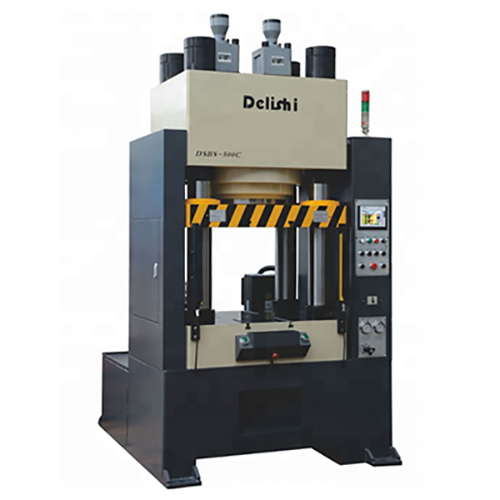
If your intention is to combine metals or plastics, then your best bet will be using a hydraulic press. Just admit it. It is one of the most useful machines in the manufacturing industry.This article will discuss some of the main benefits you will definitely get from using this machine.Top Benefits of the Hydraulic Press

Here is some basic knowledge hydraulic press Hope to increase your knowledge of the machine

The technological achievements of a generation of Chinese people who have inspired a generation of Chinese people. After Shanghai designed and manufactured an entry-level free forging hydraulic press in 1961, the technology and capabilities of domestic forging machine tools have been significantly improved, and now it has a forging capacity of 20,000+ tons.

Hydraulic press uses are in plenty because they are powerful, adaptable, reliable, and efficient. So, if you think an industrial hydraulic press would be ideal for your working environment.

Hydraulic press is a machine that uses hydrostatic pressure to process metal, plastic, rubber, wood, powder and other products. It is often used in the pressing process and the forming process

With hydraulic presses being one of the most common machines in the industrial world, there are many advantages of Goodsjack hydraulic press

Investing in the hydraulic press is one of the most lucrative businesses today and in the future. But did you know that there are so many types of hydraulic press machines in the market? The answer is yes, and each of the machines is designed to handle various pressing needs.

When you think about metal forming, it is not a surprise when deep drawing is the first thing that comes to mind. As the most popular of the metal forming methods, deep drawing is a great way to form metal sheets into just about any shape.

It’s a common dilemma for the operators of heavy-duty hydraulic systems and press machines around the world: When large diameter cylinders become worn and/or damaged – should you invest in new cylinders or repair the existing ones? While the investment in new cylinders is significant, the repair of existing cylinders can result in costly downtime, delayed production schedules, and productivity costs.

A hydraulic press works by using a plunger to exert pressure on a fluid in a small chamber. The force produced by this pressure results in a larger force that's put to use in a master cylinder. The master cylinder then presses down on whatever is on the plate underneath. The press is operating under Pascal's theory for pressure on liquids which holds that the pressure will remain constant.

Hydraulic power is currently being developed further and further each year. Goodsjack is excited to be revolutionizing this 2000+ year old technology.

The mechanical servo press allows manufacturers the best of both worlds, as it provides the versatility of a hydraulic press — including varied strokes, slide motions, dies, and part types — at the high-production speeds of a traditional mechanical press.

Purchasing capital equipment is an involved process because there is much to consider. Starting with the frame construction, it is important to ensure the custom machine has been fabricated to stand up to years of work.

The hydraulic press uses the principle of Pascal’s law. It utilizes the power of fluids for the operation. Usually, there will be three important parts in a hydraulic press;

Despite their many uses and advantages, hydraulic presses present major safety risks for employees—especially when used incorrectly. This is why it’s vital to integrate proper safety solutions across your press operations to minimize the risks associated with these powerful machines.